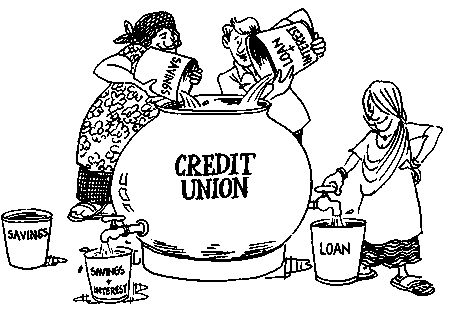Isn’t A SACCO Just A Bank?
A few months ago, I wrote about some wisdom my grandpa dispensed when I first started working. I’m ashamed to say I didn’t quite follow all the guidelines, and now 5 years later I will be seriously engaging with a SACCO.
Very few people under 30 are members of a SACCO especially in this age where the work place is getting less and less informal. The reasons could be the following:
- They don’t understand what a SACCO is and how it works
- We’re exposed to bank credit, which is easily accessible and therefore find no need to join a SACCO
- SACCOs aren’t ‘cool’
The purpose of this post is to tackle the first concern, and hopefully convince you why you should use a SACCO as your savings avenue.
Background
SACCO is an acronym for Savings And Credit Co-Operative, and I would define it as an association of like minded individuals, registered under the Ministry of Cooperatives (In Kenya), and authorized to take deposits from and lend to it’s members. SACCOs are governed by the SACCO bylaws which state the objectives, membership, share capital, organisation structure, management and lending regulations.
Most SACCOs are managed by a professional management team, which reports to a committee elected by members annually or according to the by laws of the SACCO.
Most SACCOs in Kenya have restricted membership, for example Mwalimu SACCO’s membership is restricted to teachers, but there are others like the IDB Capital SACCO which is open to any employed person.
Features
Savings.SACCOs are deposit taking and are a great tool to channel your savings. The SACCO aggregates the savings and lends them out or invests in authorised instruments such as shares, treasury bills and bonds, and in some cases property as authorised by the by laws. Returns from these savings for a member can be as high as 10%, and this is a better channel than banks for the following reasons:
- SACCOs require a minimum monthly contribution from members. This instills a saving discipline.
- The money isn’t accessible to the member unless they choose to withdraw from the SACCO or take out a loan. This protects the savings and prevents impulsive spending of cash saved.
- Savings in a SACCO do not attract bank charges at all.
- Interest paid on these savings is often higher than bank rates.
Borrowing: Once one is a member of a SACCO, they’re allowed to borrow within the limits of their savings. The standard is a member can borrow up to 3 times their savings, provided other members give them guarantees or they give a form of security. SACCOs have various products, such as emergency loans which are processed within a day, school fees loans and development loans. The Mhasibu Sacco website details their products as an example. While bank may be able to extend you a larger unsecured loan, borrowing from a SACCO has several advantages:
- SACCOs have lower interest rates and these rarely change. Most SACCOs in Kenya have been lending at 12% per annum, which is lower than the banks have offered even when market rates have been at the lowest. Banks also constantly revise their lending rates while SACCOs will rarely do this.
- As a member of the SACCO, you earn interest on your savings which are part of what you have borrowed lowering your borrowing costs further.
- While repaying a SACCO loan, a member is expected to still maintain the same level of monthly savings as they did before. This builds a saving discipline, and helps one accumulate a substantial savings base
Of course SACCOs have one main disadvantage which is they require guarantors or security, but one can begin by just borrowing within their saving level, as they seek to develop relationships within the SACCO.
Projects: SACCOs came up as a result of the Cooperative movement and because of that are very development oriented. Most SACCOs have other development projects that are very beneficial to the members. For example, Mhasibu SACCO had a Runda Plot project where by members saved over time, pooled the funds together and used these to buy a tract of land in Runda which was subdivided among the members of the project.
Participating in these projects can help one acquire investments faster and cheaper, than if they were to do it alone.
I’d recommend that one joins a SACCO even if it’s for a minimum contribution, and enjoy the benefits of the cooperative movement.
Are you a member of a SACCO? Have you ever considered joining one?
Other than IDB Capital SACCO, do you know any other SACCOs that are open to the public?
Please share your views below.





30 Comments